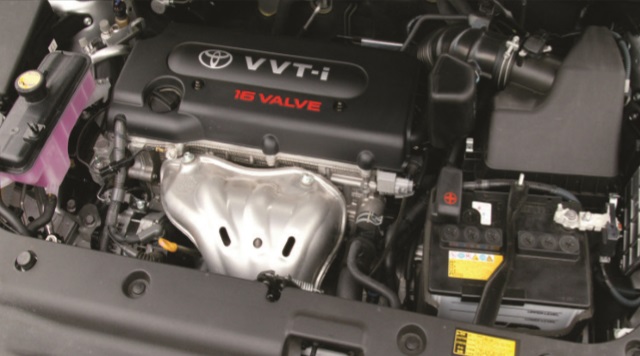
It is not as straight-forward as your car sales person says
Modern engines are designed to have more power with lower fuel consumption. Currently, on the Ugandan market, Toyota’s VVT-i engine is most noted by pushers of this view. But the technology has since been adopted by other manufacturers with similar technologies such as BMW and Honda. Proponents of the VVT-i fuel efficiency are right of course. You can save up to 30% fuel when you drive a VVT-I engine car compared to non-VVT-i. But the often unsaid truth is you can waste 30% fuel driving the same VVT-I engine. It all depends on how you drive. You save if you drive correctly and waste if you don’t. So what is the correct way to drive a VVT-i?
First you need to know what a VVT-i engine is and how it works. VVT-i stands for Variable Valve Timing with intelligence. Put simply, it is a valve timing stechnology. This means it uses sophisticated valve timing control mechanisms.
Compared to conventional engine, the VVT-i engine can deliver more torque at lower Revolutions Per Minute (RPM) range and more horsepower at higher RPM while maintaining fuel efficiency and lower emission. However, you need to take some time off to study how your VVT-i engine behaves based on how you drive.
As you possibly know already, motor vehicle engines and transmission are designed to work together so the RPM could drop to just above the lowest RPM to move the car comfortably. This preserves the car’s swiftness and saves fuel.
Based on this, there is a popular view that one should accelerate gradually i.e. press the throttle softly until the required higher RPM (3500-4000 RPM) is reached. But there is another view; that it is better to press the throttle harder so that higher RPM is attained at a faster rate. Since the higher the RPM the more horse power the engine delivers depending on size, it is logical that the longer one stays at high RPM the more energy the engine consumes.
Therefore, the quicker you press the throttle the quicker you reach desired RPM and this means you will shift into the next gear more quickly and attain low RPMs. Since the time is reduced and the RPMs are reduced, you end up reaching the desired speed with reduced fuel consumption.
Depending on your views regarding the above physics, you now need to analyse how your VVT-i engine behaves in different driving situations. Ideally, a VVT-i engine should change its timing between low engine speed and high engine speed at around 3000 RPM. Try to find the difference between your engine’s low speed timing and high speed timing. That is the point at which you feel the car accelerating faster at a specific RPM.
Next, you need to check the lowest RPM that your engine can work to move your car on a straight and level road. Check it on each gear. Usually it will be near 2000 RPM. This is where VVT-i fuel efficiency comes into play; it could deliver 90% of its torque (the power to move the wheels and therefore accelerate the car) from RPM as low as 2000.
Once you hit this point, you might have to adjust your driving habits to attain maximum fuel efficiency. Often, you might find that to drive faster, you will need to press the throttle quickly but then shift up just under the engine’s timing change RPM. So, if your engine’s timing change RPM is at 3000, you will need to shift at 2950. Since the engine and transmission are designed to work together so the RPM could drop to just above the lowest RPM to move the car comfortably(e.g. from 2950 to 1900) you will be preserving your car’s swiftness and saving fuel.
****
 The Independent Uganda: You get the Truth we Pay the Price
The Independent Uganda: You get the Truth we Pay the Price




My toyota drives smoothly at an RPM as low as 1200rpm and achieves 80% torque at that engine speed and 85% torque at 1500rpm (peak torque is at 3600rpm). I drive at 30mph in 5th gear and it’s extremely smooth as long as you downshift to accelerate or climb hills. I have averaged 67mpg over 30,000 miles
6